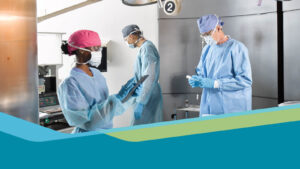
The Five Pillars of Premier Anesthesia’s Parent Company, Jackson Healthcare
Jackson Healthcare, the parent company of Premier Anesthesia, has success anchored in five key pillars that drive the organization’s mission and vision. These pillars are not mere corporate buzzwords but the core principles guiding every decision and action. Long-Tenured Expert Associates Just like Premier Anesthesia, the associates at Jackson Healthcare are the backbone of the organization. The company prides itself on having a team of long-tenured experts who are deeply knowledgeable and passionate about their work. These individuals are not just employees but dedicated professionals who have chosen to build their careers with Jackson Healthcare. Technology: Investing in...
Read More
The Role of Innovation in Healthcare: Insights from Jackson Healthcare, Parent Company of Premier Anesthesia
Innovation is a cornerstone of progress in any industry, and healthcare is no exception. At a recent town hall meeting, Shane Jackson, President of Jackson Healthcare, the parent company of Premier Anesthesia, shared his thoughts on the current state of the healthcare market, the company’s strategic direction, and the pivotal role that innovation plays in driving success. His insights highlight the importance of continuous improvement and technological advancement in overcoming industry challenges and achieving sustainable growth. Navigating Industry Challenges with Innovation The healthcare industry is currently facing significant challenges. Market decline and cost-cutting measures by hospitals and ambulatory surgery...
Read More
Is Anesthesia Running Out of Gas? – Understanding The Pain Inflicted By The ‘Financialization’ Of Anesthesia
Currently, anesthesia is administered over one hundred million times annually in the U.S. That number has been climbing year-over-year and is expected to continue into the foreseeable future. Our population is aging. Every day, approximately 10,000 baby boomers retire and that population will balloon from 35.1 million in 2000 to over 69 million in 2030. Put simply, the demand for anesthesia services, especially for an aging population with medical needs, has never been higher. In the wake of the COVID-19 pandemic, hospital expenses are rising as health care staff leave medicine and their positions are filled often using costly temporary...
Read More
When is the Right Time for an Anesthesiologist to Become a Medical Director?
The journey of an anesthesiologist is one that demands expertise, precision, and a deep commitment to patient care. As these professionals progress in their careers, some may contemplate the next step: transitioning into a leadership role as a medical director. Employers typically seek medical director candidates with at least ten years of practical experience before considering them for this leadership role. Additionally, candidates are expected to adhere to state and board regulations, engage in ongoing education and training, and may benefit from supplementing their qualifications with an MBA focused on healthcare management or specialized certifications. However, these criteria extend beyond academic and...
Read More
Why Your Hospital’s Reputation Matters and How an Anesthesia Program Can Help
A hospital’s reputation is an invaluable asset that not only shapes the perspectives of patients but also influences the decisions of partners, families, existing medical providers, and potential new hires. In today’s digital age, where information is readily available, individuals have unprecedented access to data about where they receive care. Annual lists published by reputable sources such as U.S. News and Newsweek, along with online reports from health insurance companies, contribute to a vast pool of information accessible to the public. While various factors contribute to shaping a hospital’s reputation, including its location, financial stability, equipment, and staff, one aspect...
Read More